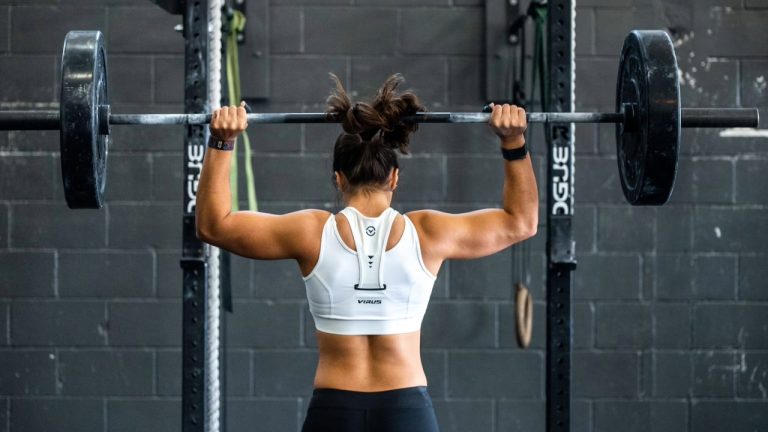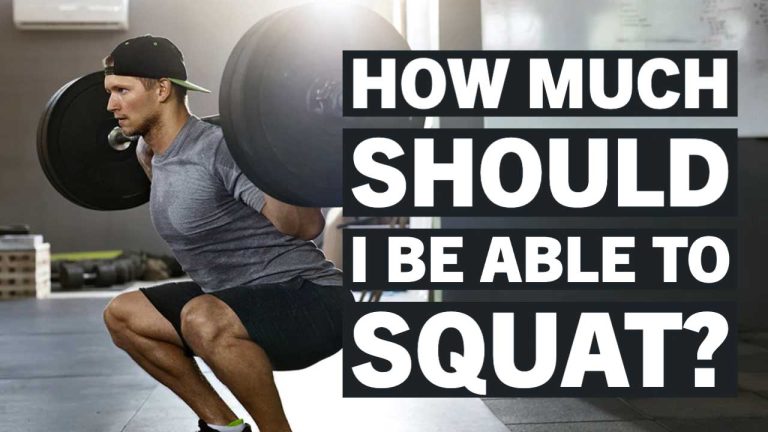All You Need To Know About Lifting Chalk: Answers To Common Questions
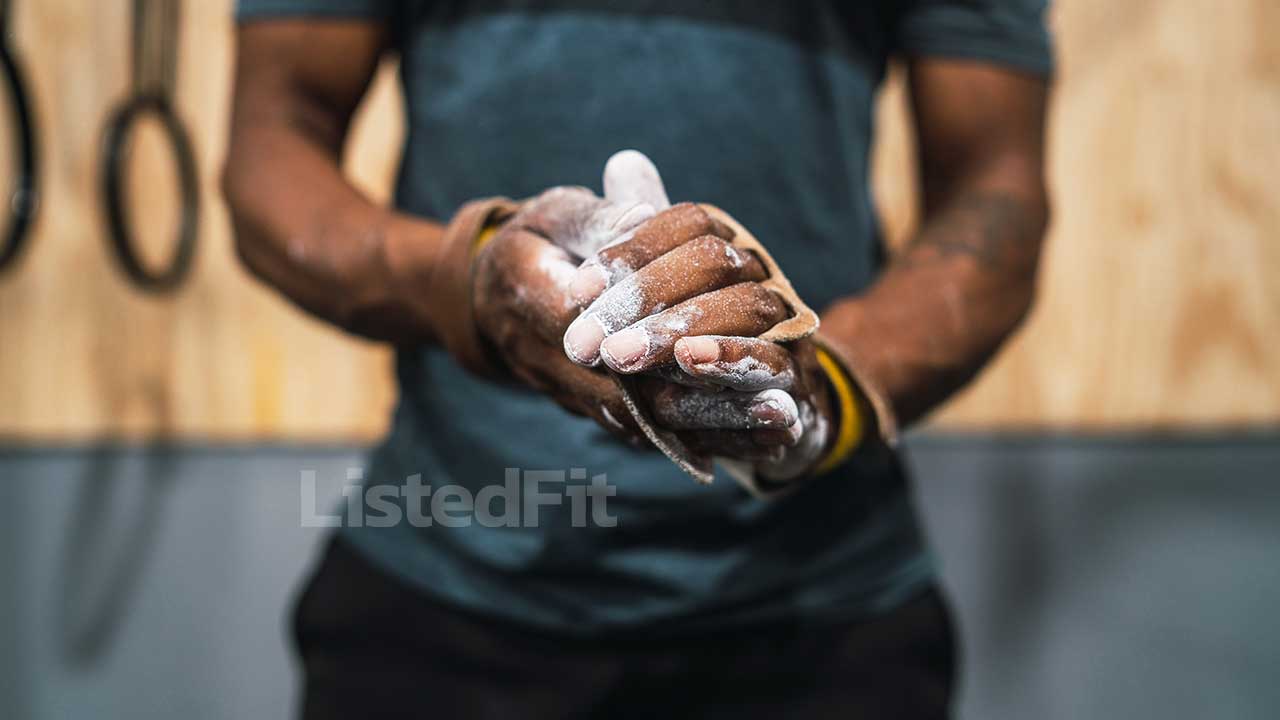
ListedFit is reader-supported. When you buy through links on our site, we may earn a small commission.
If you’ve ever been to a gym, you’ve likely seen people with white powdery residue on their hands and clothes. This white powder is lifting chalk, and it’s used to help athletes and weightlifters get a better grip on the bar and weights they’re lifting.
Lifting chalk is a common gym accessory that provides many benefits, but it can also be a confusing and intimidating topic for beginners. Questions like “What is lifting chalk and why should I use it?” and “Is it safe?” are often left unanswered.
Fortunately, this article will provide you with all the information you need to know about lifting chalk, from why you should use it to how to apply it safely.
Lifters and calisthenics enthusiasts, here’s what you need to know.
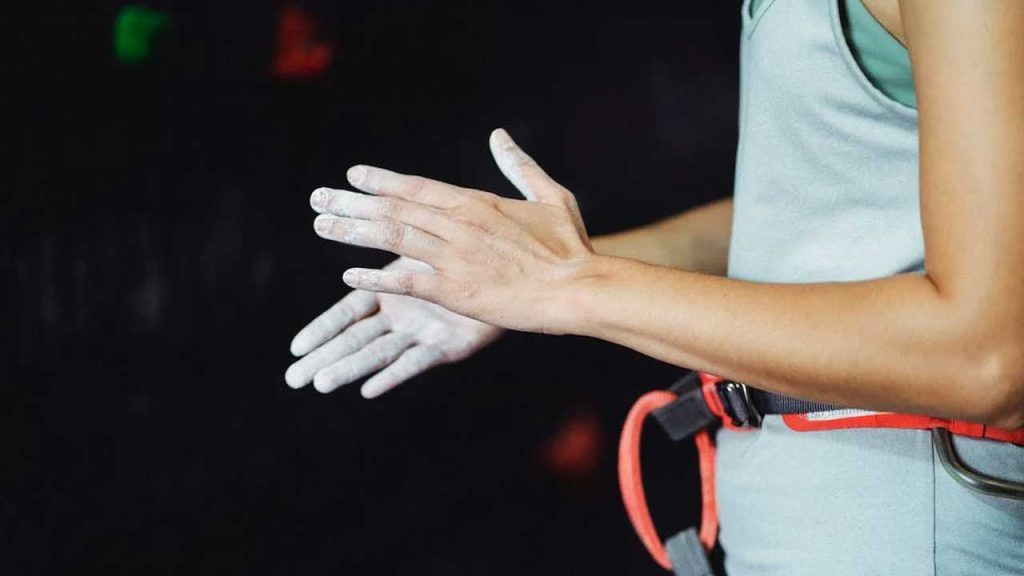
Table of Contents
Liquid Chalk vs Block Chalk – Which Is Better?
The primary benefit of using liquid chalk is that it lasts much longer than powder chalk. After applying liquid chalk to your hands, it can take up to an hour for the chalk to wear off – meaning you don’t have to reapply it after every set.
It also helps you stay drier, as the chalk doesn’t leave behind any powdery residue. Plus, liquid chalk doesn’t require you to get your hands messy or create a cloud of dust that can irritate your eyes and lungs. As an added bonus, liquid chalk is much cheaper than powder chalk, and it’s easier to store and take with you on the go.
So as a way to improve your grip and keep your hands dry, liquid chalk is way better. There are several liquid chalks on the market, our best recommendation is below.
Best Liquid Chalk – Our Recommendation

This liquid chalk works very well as an alternative to traditional block chalk. One application usually lasts me 2 sets before I have to reapply it.
It’s easy to clean off with soap and water, it doesn’t feel nasty on your hands, and dries fairly quickly.
However, it’s not mess free, there will still be some fallout and transfer onto the equipment but it’s a fraction compared to what regular block chalk leaves behind.
Lifting Chalk Frequently Asked Questions
-
Why Is Gym Chalk So Expensive?
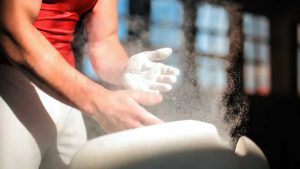
The answer is simple – quality gym chalk is hard to come by. The best chalk is made of magnesium carbonate, which is naturally mined from the earth. This natural resource is becoming increasingly rare and more expensive to source, making the cost of gym chalk higher.
Additionally, the process of making gym chalk is labor-intensive and requires specialized equipment, driving up the cost even further.
However, chalk prices also depend on its intended use. Gym chalk becomes expensive because its source and texture matters for the consumers.
-
What Can I Use Instead of Block Chalk for Lifting?
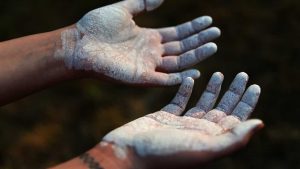
Chalk may be helpful in drying out moisture and improving your grip in lifting but it does not hide the fact that many people find chalk generally annoying mainly in the fact it scatters all over the place.
Other than that, if not cleaned properly, the accumulation of chalk dust and other particles such as sweat, dead skin, dirt, and blood may oxidize and leave rust on gym equipment.
This is why some gyms prohibit lifting chalk. And besides, who would be patient enough to consistently clean such mess?
But there are some chalk alternatives for gym enjoyers and athletes alike:
1. Liquid Chalk
This is one of the best alternatives for lifters who want to have an enhanced performance with less mess to deal with.Unlike a regular block chalk, liquid chalks tend to dry faster since they usually have a mixture of rosin and isopropyl or rubbing alcohol, which when exposed to the air, quickly dries out and leaves a slightly tacky feel that prepares your hand for action.
Plus, it does not demand constant reapplication since liquid chalks tend to last longer than regular chalks. Although more expensive than block chalk, the convenience and practicality of liquid chalks often outweighs the cost.
2. Exercise Gloves
While hardcore bodybuilders and athletes usually use chalk in lifting, casual gym goers and weightlifting enthusiasts often use gloves as a solution to improve hand grip and protect from calluses.
Fingerless and open-back gloves provide more breathability, and evaporate sweat more efficiently whereas some gloves use more rubber in the material to give more grip to the user.
Additionally, some gloves come with silicon pads that are strategically placed at the right spot to specifically protect users from calluses in specific areas of the palm.
3. Lifting Straps
Lifting straps or also called wrist straps is another alternative for chalk. This material is looped around the wrist and wrapped in the bar with the means to help the user in increasing their grip.Also used for when muscular strength overpowers your gripping ability and your grip becomes the limiting factor for growth, straps are used as a tool to continue building strength.
-
Can I Use Crayola Chalk for Lifting?

Can I just crush school Crayola chalk when my lifting chalk runs out? You can, but note that the effectiveness in moisture control and grip of crayola from lifting or performance chalk differs greatly.
The ingredient in lifting chalk that provides better grip is the chemical compound magnesium carbonate. According to chemistry expert and Rice University Professor of Materials Science Andrew R. Barron, the said compound is insoluble in water, meaning they are incapable of being dissolved in water.
The word “carbonate” may sound familiar because it is used in common chalk like the ones from Crayola with another compound named calcium carbonate.
-
What’s The Difference Between Gym Chalk and Regular Chalk?
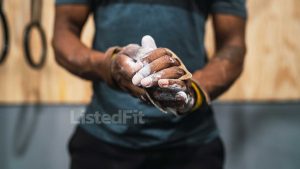
These two chemical compounds both have the ability to absorb water but what sets them apart is that in the same way calcium carbonate absorbs water, it also gets dissolved in it.
Unlike magnesium carbonate, it absorbs moisture and does not dissolve in water.
-
Is Gym Chalk Bad for Your Lungs?
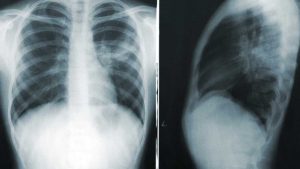
If you frequently use gym chalk (the block chalk) and the gym has little to no proper ventilation, you may be in for its long term effects to the respiratory system. It can worsen asthma, trigger bronchitis, and irritate the windpipe.
Generally, fine particles are bad for the lungs especially if they don’t get filtered properly by the cilia in our nose and windpipe. Tiny hairs inside our nostrils up to our trachea filter the air that we breathe and trap tiny particles such as dust from vehicle exhaust, pollen, and in this case, chalk.
You smear chalk in your hands and clap to even them out for better grip. Where do those micro particles go? Aside from covering everything around you in dust, they get inhaled.
Chalk also builds up in nooks, and crannies, making the air quality poor. If you inhale it infrequently and in short amounts, it would not be much of a problem. But if done frequently, it does become a problem.
People sweat in the gym, not to mention coughing and sneezing. After taking samples of the air in gyms, research also found that bacteria like Salmonella (Salmonella cholereasuis), Staph (Staphylococcus aureus), E-Coli (Escherichia coli) and Candida (Candida albicans) thrive on shared gym chalk containers.
Another thing to note is that it’s not the chalk that primarily harms the lungs, but what it is made of or rather, what it gets mixed with. Yes, it is magnesium carbonate as previously mentioned. But gyms often keep their chalk in one container like a plastic tub or bucket.
Sharing is never bad, but when it comes to hygiene and safety, you may want to keep your own stash of gym chalk. In a wad of gym chalk, it would be normal to find mat fibers, hair, and other harmless foreign things.
-
Can I Use Sidewalk Chalk for Lifting?
Calcium carbonate, the main ingredient of sidewalk chalks may be capable of absorbing moisture, it also easily dissolves in water according to Andrew R. Barron, a chemistry expert.
That is to say, using sidewalk chalk may be effective temporarily, but it cannot be used for lifting since it will lose its effectiveness the moment you start sweating.
-
Can You Use Baby Powder as Lifting Chalk?
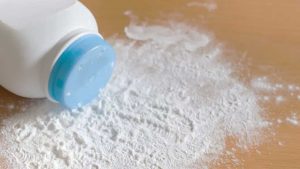
Absolutely not. Baby powders are not an advisable alternative for chalk. Using baby powders may be used like a hack to reduce friction but it is not necessarily an alternative since it does not provide support when it comes to gripping.
They contain talcum powder or cornstarch, ingredients that do not ease your job in lifting and actually makes the bar more slippery.
-
Can You Use Flour as Gym Chalk?
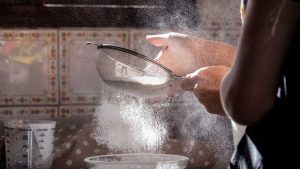
Flour may have a similar function as baby powder, which is to serve as an aid to reduce friction but is totally unhelpful in gripping bars.
Flour can be used as an alternative for a lot of things except gym chalk. One can make gym chalk out of flour but it was not proven effective since flour is made up of wheat, which has nothing to do in helping you lift weights, while gym chalk is composed of magnesium carbonate which was designed to dry out the moisture from your palms.
-
Does Chalk Go Bad?
Normally, chalk will remain safe and usable even if it is used beyond the expiration date on the label, which is only placed there for the sole purpose of complying with the regulations.
Even after the designated expiration date, chalk will not lose its effectiveness, or react differently when exposed to other chemicals.
However, chalk may absorb moisture from its surrounding environment when not stored in a sealed container. This is something you want to avoid. It is best to keep your chalk inside a ziplock bag or in airtight containers before stashing it together with your other lifting equipment.
If your chalk gets wet, you can always bake the moisture out to 120 degrees celcius in an oven or simply place it outside and let the sun do its thing.
-
How Much Does Chalk Help Deadlift?
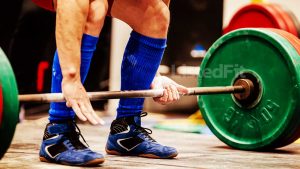
Some do say that chalk is essential in improving your grip on the bar.
It does not necessarily mean that chalk increases or decreases strength, however, it surely does enable you to pull more and express your actual strength potential that is often hindered by sweaty hands.
Chalks are also a necessary protection, it helps you to be safer in lifting. Since slipping or dropping weights can rip calluses, chalks are used to prevent severe injuries caused by slippery palms.
-
Is Lifting Chalk Toxic?
Lifting chalk is mostly made up of magnesium carbonate, a non-toxic and nonflammable chemical compound, which is relatively harmless to the human system. But that is just the mineral base of chalks.
Some brands differ in texture, which means other chemicals are added to further improve performance and effectivity. However, since magnesium carbonate does not react negatively to other chemicals, its toxicity is still far from possible.
So it is safe to say that chalk is not really that dangerous when taken in small to moderate amounts. Even if you eat a small amount of chalk, you would eventually be fine aside from tasting its dust-like texture. But health problems begin when the inhaled dust particles from chalk accumulate over time and are accompanied by other gym air pollutants that are caused by poor ventilation, growing molds, and dampness.
Author
Latest entries
 FitnessAugust 19, 2023Yohimbe vs Yohimbine: A Quick Comparison Guide
FitnessAugust 19, 2023Yohimbe vs Yohimbine: A Quick Comparison Guide AshwagandhaJune 16, 2023Is Ashwagandha Good for Working Out? Key Benefits Explored
AshwagandhaJune 16, 2023Is Ashwagandha Good for Working Out? Key Benefits Explored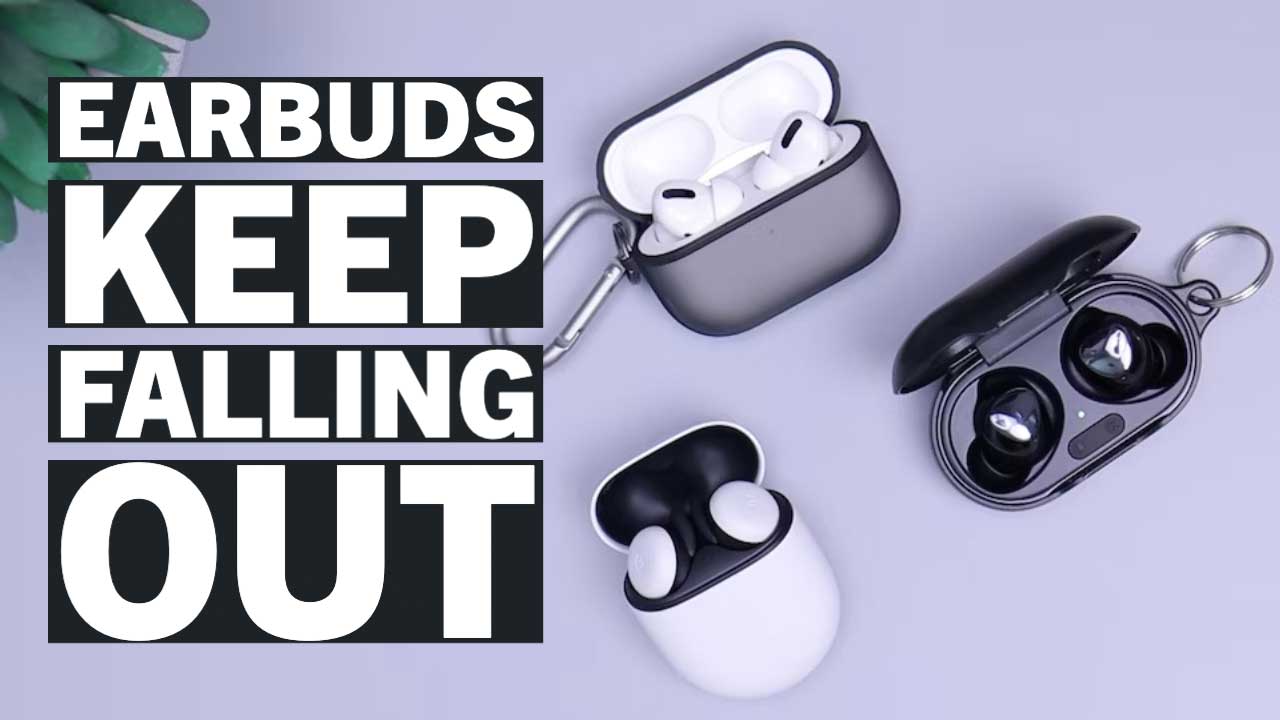 Sports HeadphonesMay 25, 2023Why Your EarBuds Keep Falling Out – Quick and Easy Solutions
Sports HeadphonesMay 25, 2023Why Your EarBuds Keep Falling Out – Quick and Easy Solutions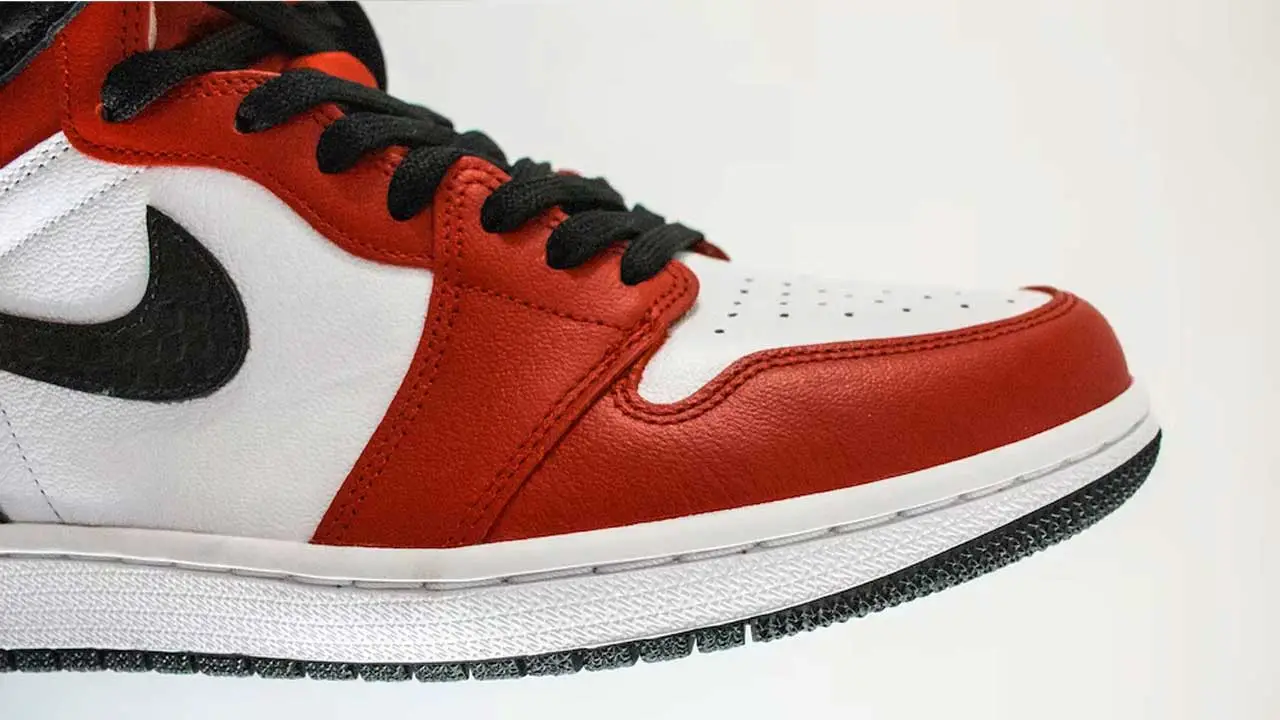 Nike ShoesMay 12, 2023Do Nikes Run Big or Small? Decoding the Perfect Fit
Nike ShoesMay 12, 2023Do Nikes Run Big or Small? Decoding the Perfect Fit
Affiliates:
This post may contain affiliate links that at no additional cost to you, the site may earn a small commission. We only recommend products we would use ourselves and all opinions expressed on this site are our own.
General Advice:
The information provided in this article is for general informational purposes only. It is not intended as a substitute for professional advice. Always consult with a qualified healthcare professional before starting any new diet, exercise program, or making changes to your health routine.
Accuracy Advice:
While we strive to provide up-to-date and accurate information, the content in this article may not reflect the most current research or medical guidelines. We encourage readers to do further research and consult with professionals for more personalized advice.
Our Recommendations:
The products and services mentioned in any of our articles are recommended based on our independent research and personal experience. We are not sponsored by any company. We aim to suggest products and services we believe are of high quality and could be beneficial to our readers.

